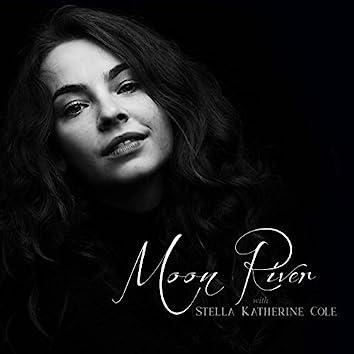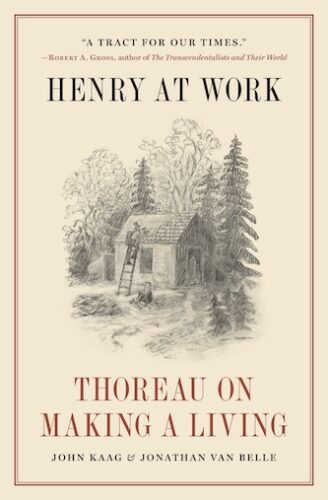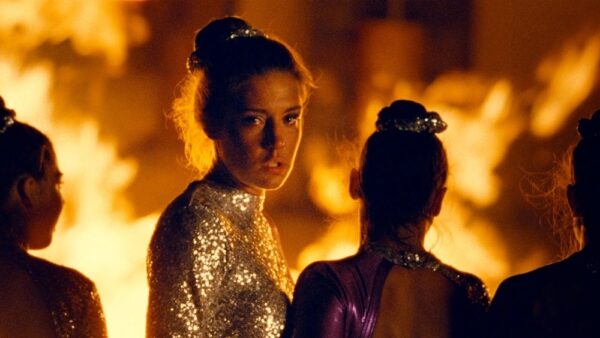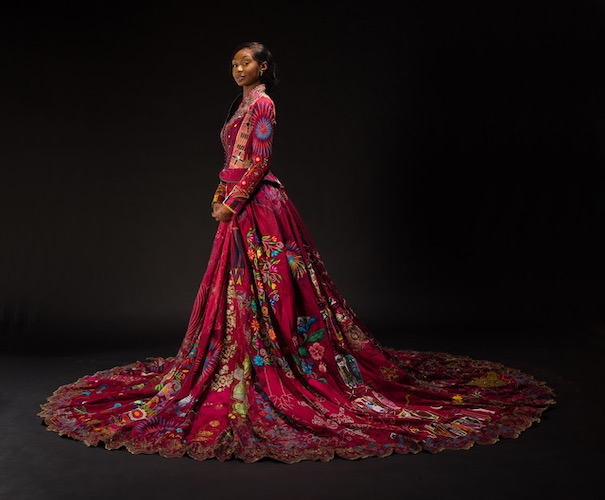July Short Fuses — Materia Critica
Each month, our arts critics — music, book, theater, dance, television, film, and visual arts — fire off a few brief reviews.
Folk
Mike Kane’s songs are well-written and performed, sung with emotion and intent.
![]() Massachusetts-born and bred, drummer Mike Kane has just released String of Lights, a five-song EP on which he wrote the tunes, sang them, and played acoustic guitar. But he did no drumming. Perhaps one reason why is that the songs are uniformly mellow, melodic, and thoughtful; it’s his voice that should be — and is — his primary means of reaching the listener. Still, for a drummer, he’s very comfortable doing other things.
Massachusetts-born and bred, drummer Mike Kane has just released String of Lights, a five-song EP on which he wrote the tunes, sang them, and played acoustic guitar. But he did no drumming. Perhaps one reason why is that the songs are uniformly mellow, melodic, and thoughtful; it’s his voice that should be — and is — his primary means of reaching the listener. Still, for a drummer, he’s very comfortable doing other things.
“I gigged with my brothers in the ‘70s, then took a six-year hiatus in the ‘80s while I was in the Peace Corps,” he says. “I gradually returned to the bar band scene in the ‘90s and ‘00s and started writing my own songs — not for me but for others to record.”
Kane eventually met and began playing with guitarist Michael Dinallo, who’d been bouncing back and forth from Boston to Nashville. “We traded audio files of stuff we were working on,” says Kane. “He was setting up a home studio so we decided I’d be the guinea pig and we recorded the demos that morphed into this EP.” Seeking a more intimate sound than one typically gets with file-sharing projects, the two convened in Nashville to cut the backing tracks for four of the songs.
Joining Kane and Dinallo on the recording are bassist Dave Jacques (John Prine), drummer Justin Amaral, mandolinist (and coproducer and engineer) Tim Carter, Kane’s brother James on harmonica, Mike McAdam on slide guitar, Jim Gambino (Swinging Steaks) on B3 organ and accordion, and Smith Curry on pedal steel. Harmony and background vocals are ably supplied by Anita Suhanin, Juliet Dinallo, and Amber Angelina (the latter regularly found singing at the Plough and Stars in Cambridge).
If I have to give one critique on the folky-countryish music (with a touch more rock in the mix, it would remind you of David Gray), it’s that all five songs have the same mid-tempo groove and cozy-up-to-the-fire feel. But that’s the only criticism. The songs are well-written, performed and sung with emotion and intent. One has the illusion that Kane is sitting on the couch next to you, serenading you with his flannel tenor, while twangy guitars float gently around you. My favorite tracks are “Couldn’t Change the Weather” and “Ghosts of Distant Stations.”
The digital-only EP, released by Memphis International Records, can be sampled and ordered here as of June 16.
— Jason M. Rubin
Rock
Both members of Divide and Dissolve are indigenous and the Australian group’s musical goals are explicitly political.
 Divide and Dissolve’s fourth album, Systemic, recognizes the artificiality of genre boundaries. The duo of guitarist/saxophonist Takiaya Reed and drummer Sylvie Nehill, based in Melbourne, Australia, adopt doom metal’s snail’s pace and staggered rhythms, but deftly insert elements of jazz and classical music, especially in their intros. “Want” is built around loops of wordless vocals, strings and instruments that are so distorted their original nature become unrecognizable. “Blood Quantum” begins with a wailing saxophone, but submerges it under thunderous guitar and drums. Nehill’s drumming is unusually heavy on crash cymbals and open hi-hats and it is mixed loud, which gives the music a piercing edge. The cymbals inhabit the high end, while the guitar is deep enough to shake your speakers. The band doesn’t have a bass player, but Reed’s guitar is thick and low enough to make one unnecessary. Despite its jazz influences, Divide and Dissolve are the anthesis of swing. Guitar and drums pound away at the same riffs and rhythms like someone struggling to escape from quicksand.
Divide and Dissolve’s fourth album, Systemic, recognizes the artificiality of genre boundaries. The duo of guitarist/saxophonist Takiaya Reed and drummer Sylvie Nehill, based in Melbourne, Australia, adopt doom metal’s snail’s pace and staggered rhythms, but deftly insert elements of jazz and classical music, especially in their intros. “Want” is built around loops of wordless vocals, strings and instruments that are so distorted their original nature become unrecognizable. “Blood Quantum” begins with a wailing saxophone, but submerges it under thunderous guitar and drums. Nehill’s drumming is unusually heavy on crash cymbals and open hi-hats and it is mixed loud, which gives the music a piercing edge. The cymbals inhabit the high end, while the guitar is deep enough to shake your speakers. The band doesn’t have a bass player, but Reed’s guitar is thick and low enough to make one unnecessary. Despite its jazz influences, Divide and Dissolve are the anthesis of swing. Guitar and drums pound away at the same riffs and rhythms like someone struggling to escape from quicksand.
Both members of Divide and Dissolve are indigenous and the group’s musical goals are explicitly political. That is obvious given that the album is called Systemic and songs titles such as “Blood Quantum” and “Simulacra,” but Reed’s press statement goes much further: “The goal of the colonial project is to separate Indigenous people from their culture, their life force, their community and their traditions. The album is in direct opposition to this.” The only words on the recording are delivered by poet Minori Sanchiz-Fung on “Kingdom of Fear”: “If I am denied/The simple gentleness/Of existing,/Then I will leave/My gifts/Like lichen over the oak branches,/trusting they’ll be safe/Until you find them.“ The band is careful to tone down their usual harsh sound to let Sanchiz-Fung’s voice take precedence.
They make instrumental music, so what message is the two-ton weight of Divide and Dissolve’s sound supposed to send? Does it represent the crushing weight of power? Or the struggle to fight back against it? To me, it feels like both at once. Also, the titles of the opening and closing tracks (“Want” and “Desire”) point to something more personal as well. “Desire” eventaully lets the saxophone sing, free of without interruption. We are given a sense of beauty that is no longer under the threat of danger. On an album where each note lands with the force of centuries of repression, the occasional release of happier passages feels all the more intense.
— Steve Erickson
Jazz
What really sets Stella Katherine Cole apart is her love and enthusiasm for the classic material, which comes through as strongly as I’ve ever seen it in a young singer.

It’s fun to write about singer Stella Katherine Cole because it makes me feel like a copy writer for Variety circa 1940, with a pencil behind my ear, working on a tight deadline and a shot of whiskey. Scrappy Girl Singer Storms New York City!
Cole built her half-a-million-strong audience on Tik Tok, going viral with a simple excerpt of a song from “Grease.” She sings alone, in her room, in a stairway, or wherever the mood hits her. She carries her teasing Tik Tok-sized fragments of songs with only her supple phrasing, perfect intonation, and welcoming personality. Longer examples are on her popular YouTube channel.
Cole came up the old school way: through local musical theatre. She’s ripe for a leading role in a major musical with her powerful lungs and girl-next-door good looks. At only 24, she can be the one to pass along a love for the cabaret standards to the next generation.
Her style is to Judy Garland what Madeleine Peyroux’s is to Billie Holiday. Whether this is a blessing or a curse (for the inevitable comparisons), Cole uses it as a launching point and not a limitation. What really sets Cole apart is her love and enthusiasm for the classic material, which comes through as strongly as I’ve ever seen it in a young singer. She may need a few more miles before she can sell a tragic torch song like Garland, but for now even a chorus of some ditty like “The Trolly Song” or “Get Happy” can light up her whole face like a Christmas tree. It’s a delight to see in someone of any age.
She currently has a Gofundme campaign to support her first album. As that Variety writer might say, “She needs her big break. The kid has heart.”
-Allen Michie
Public Art
Lot Lab is an important attempt to cultivate social interaction through conversation and creative collaboration, to intertwine public art, hands-on workshops, walking tours, and live performances.

Sam Fields’s contribution to Lot Lab. Photo: Mark Favermann
Transforming underused walls or vacant spaces through temporary art exhibits or public art projects, Boston-based Now+There has become a significant city-wide artistic placemaking organization. It embraces a philosophy of using temporary public art to create change. Its most recent target is an empty lot in the historic Charlestown Navy Yard, which has become a site for community and visitor interaction and multi-arts entertainment highlighted by environmental art pieces. The site has been designated Lot Lab — with its first installation running through October 31.
Over the next three years, in partnership with the National Park Service and Boston Harbor Now, Lot Lab will serve as a means to explore, for the public, Charlestown Navy Yard’s past, present, and future. Facilitating engagement around yearly designated themes, the space will call for artists to creatively engage, converse, and collaborate with Charlestown’s rich diversity of residents and visitors. “Repair and Mend” is this year’s focus. Now+There Executive Director Kate Gilbert explains: “The program also wants to repair and mend the space as well as social relations through transformative public and performing arts.”
The notion of the “lab” in Lot Lab suggests the sometimes-magical sense of artistic experimentation. The first three artistic “experiments”: Ghada Amer (“Women’s Qualities” — a circle of large-scale Corten steel flower boxes filled with native plants that spell out descriptive words associated with women); Massiel Grullon (“Knotical Waves” — a curving linear mural in primarily blues and greens painted on the ground and small building wall; and Sam Fields (“Stay” — a woven and spliced hanging created from over 360 colorful nautical ropes).
Conceptually, Lot Lab is compelling but, grouped together as they are, the works don’t make a cohesive aesthetic statement — it is more like an arrangement of stage set props. The lesson here is that all studio artists are not suited to do public art. But that issue should not undercut the inspiring value of Lot Lab — it is an important attempt to cultivate social interaction through conversation and creative collaboration, to intertwine public art, hands-on workshops, walking tours, and live performances.
— Mark Favermann
Books
John Kaag & Jonathan Van Belle succeed at their goal of making Thoreau’s an attractive “voice for freedom, equality, self-reliance, and humility in an age that often sought to drown it out.”
 “We’ve been drawn to Henry David Thoreau,” write John Kaag & Jonathan Van Belle in Henry At Work: Thoreau on Making a Living (Princeton University Press, 232 pages), “because he so consistently, with humor and compassion, warns us about the existential dumpster fires in the modern workplace.” The word dumpster wasn’t coined until well over fifty years after Thoreau died in 1862 at the age of 44, but you get the point, as well as the breezy tone of the book. Industrialization was revving up and Thoreau became one of the first – and among the most articulately astringent — dissenters to protest the rise of soul-sucking capitalism. (“Trade curses everything it handles,” he charged in Walden.) Preternaturally alert to mortality, he extolled the value of the individual, ecological ethics, meaningful work, and modest living, to the point that he could be pretty difficult to deal with: for many, even buddy Ralph Waldo Emerson, his gospel of minimalism could be as off-putting as it was admirable. As recently as 2015, a New Yorker piece entitled “Pond Scum” dismissed Thoreau as an egotistical cold fish, more into aesthetics and grandiloquence than humanity.
“We’ve been drawn to Henry David Thoreau,” write John Kaag & Jonathan Van Belle in Henry At Work: Thoreau on Making a Living (Princeton University Press, 232 pages), “because he so consistently, with humor and compassion, warns us about the existential dumpster fires in the modern workplace.” The word dumpster wasn’t coined until well over fifty years after Thoreau died in 1862 at the age of 44, but you get the point, as well as the breezy tone of the book. Industrialization was revving up and Thoreau became one of the first – and among the most articulately astringent — dissenters to protest the rise of soul-sucking capitalism. (“Trade curses everything it handles,” he charged in Walden.) Preternaturally alert to mortality, he extolled the value of the individual, ecological ethics, meaningful work, and modest living, to the point that he could be pretty difficult to deal with: for many, even buddy Ralph Waldo Emerson, his gospel of minimalism could be as off-putting as it was admirable. As recently as 2015, a New Yorker piece entitled “Pond Scum” dismissed Thoreau as an egotistical cold fish, more into aesthetics and grandiloquence than humanity.
Thus the genial, chatty tone of Kaag and Van Belle’s study, which argues that Thoreau’s bare bones creed offers a powerful alternative to our workaholic ethos. Chapters with titles such as “Clocking In,” “Meaningless Work,” and “Fulfilling Work” present a portrait of an iconoclast of everyday employment: he was a thinker who fearlessly defined what kind of work really mattered, a member of the community (for all his isolationist tendencies) who treated co-workers with respect. Thoreau also pointed out the enemy; he disdained the propertied class. His putdowns of profit-mad farmers carry the acidic sting of an H. L. Mencken. Still, Kaag and Van Belle succeed at their goal of making his an attractive “voice for freedom, equality, self-reliance, and humility in an age that often sought to drown it out.” The waters have only risen since then.
Speaking of rising waters, given the mounting threat of the climate crisis it would have been nice if the book had connected Thoreau’s ideas about the joys of a pared down existence with current speculation about the future of work, including economic theories such as ‘degrowth,’ which explore how we can ditch our obsession with an ever-growing GDP. More disappointing, Kaag and Van Belle point out Thoreau’s love of “wildness,” but it strikes me that this portrait of their unruly subject has been smoothed over for easier consumption. French philosopher Frédéric Gros, in his chapter on Thoreau and civil disobedience in Disobey!, writes that Thoreau’s radical vision of individuality was about more than becoming an independent ‘I,’ but an ‘I’ that could “no longer tolerate the intolerable.” “To discover in oneself the non-delegable ‘I’ is to feel oneself called on to act for others,” argues Gros,”to bring into existence the justice whose urgency one feels.” For Thoreau, who played an active role in the Underground Railroad in Concord, work was not just about raising your daily bread, but working to change the world. My feeling is that, if he were alive today, he would be shoulder to shoulder with Greta Thunberg.
— Bill Marx
Film
The Five Devils is a haunting, sensuous, intense, beautiful film which was received with passionate acclaim at the 2022 Cannes Film Festival.

Adèle Exarchopoulos in The Five Devils.
Léa Mysius’s The Five Devils is set in Grenoble, France. At the story’s center is Vicky (Sally Dramé), a young girl with a strange gift: she can visualize and recreate the scents of people and things. She does this with an elaborate system of jars and natural ingredients: mud, flowers, rocks. Her mother Joanne (Adèle Exarchopoulos) is intrigued by her daughter’s talents. She plays a game in the woods after she realizes Vicky can find her based on her scent alone, even after she has been blindfolded. Working days as a swimming coach, Joanne has an amicable but somewhat cold relationship with her husband Jimmie (Moustapha Mbengue), who is devoted to his family but dissatisfied in his life. When Jimmie’s sister Julia (Swala Emati) visits after being released from prison and a triggers a complicated tension. Vicky is wary of Julia, mixing foul-smelling potions to drive her away. She also begins to have confusing visions of others’ past lives.
Flashback scenes begin to unravel disturbing past secrets, and Joanne, Jimmie and Julia must face choices that will alter their future. Some viewers might want more straightforward explanations of the film’s forays into time travel and clairvoyance. For me, the narrative’s magic realism was compellingly intertwined with the story’s emotional arcs. The cast is superb, especially Sally Dramé, whose onscreen presence captivates. Mysius also wrote the screenplay for Clair Denis’ 2022 film Stars at Noon. Here she establishes mood and tone with masterful command, especially given the considerable challenge presented by the unfilmable phenomenon of scent. The Five Devils is a haunting, sensuous, intense, beautiful film which was received with passionate acclaim at the 2022 Cannes Film Festival. (Available on Apple Tv and Vudu)
— Peg Aloi
Visual Art
The Red Dress is beautiful to behold, but also powerful in a number of other ways. It challenges traditional notions of art as the product of a single artist and suggests the strength — politically and aesthetically — of communal creation.

Jamaica’s Lekazia Turner wearing The Red Dress. Photo: Mark Pickthall
The Red Dress has arrived for its its debut appearance in the United States at the Southern Vermont Arts Center in Manchester, VT, through September 24. Made of yards of silk dupioni, the color red was, according to its creator Kirstie Macleod, an inevitable choice — a metaphor for power, significance, and women’s blood.
Macleod, a conceptual and textile artist, spent fourteen years on the project, originally constructing the dress and then wearing it herself as a one-woman exhibition in which she enclosed herself in a glass box and quietly embroidered on the fabric. At some point she decided to de-emphasize herself and reach out to women around the world to embroider panels on the dress. Many of these artists were refugees or other kinds of marginalized women; they were invited to tell their stories through embroidery. Panels were sent out, embroidered, and returned over various time frames. One patch took seven years to complete. Over the decades the dress was deconstructed and rebuilt numerous times. The completed work eventually called on the efforts of 375 contributors in 51 countries.
The Red Dress is an impressive artifact that embroidery artists and the casual observer will want to eye closely, examining the various motifs that bump up against each other, almost as if they are in conversation. Few square inches of silk remain unadorned. The garment is beautiful to behold, but also powerful in a number of other ways. It challenges traditional notions of art as the product of a single artist and suggests the strength — politically and aesthetically — of communal creation.
An accompanying video provides helpful context. Camera crews accompanied Macleod as she traveled with the completed dress back to some of the individual artists so that they could see how their panel had become part of the whole. Contributing artists — and they alone — have been permitted to wear the dress. Numerous outsiders have asked for the privilege, but all requests have been denied.
The Red Dress will also travel to The Frick Pittsburgh and Fuller Craft Museum.
— Susan B. Apel
Tagged: Allen Michie, Bill-Marx, Divide and Dissolve, Henry David Thoreau, Henry at Work, Jason M. Rubin, John Kaag, Jonathan Van Belle, Kirstie Macleod, Lot Lab, Léa Mysius, Mark Favermann, Mike Kane, Now+There, Peg Aloi, Stella Katherine Cole, Steve Erickson, String of Lights, Susan B. Apel, Systemic, The Five Devils, The Red Dress

